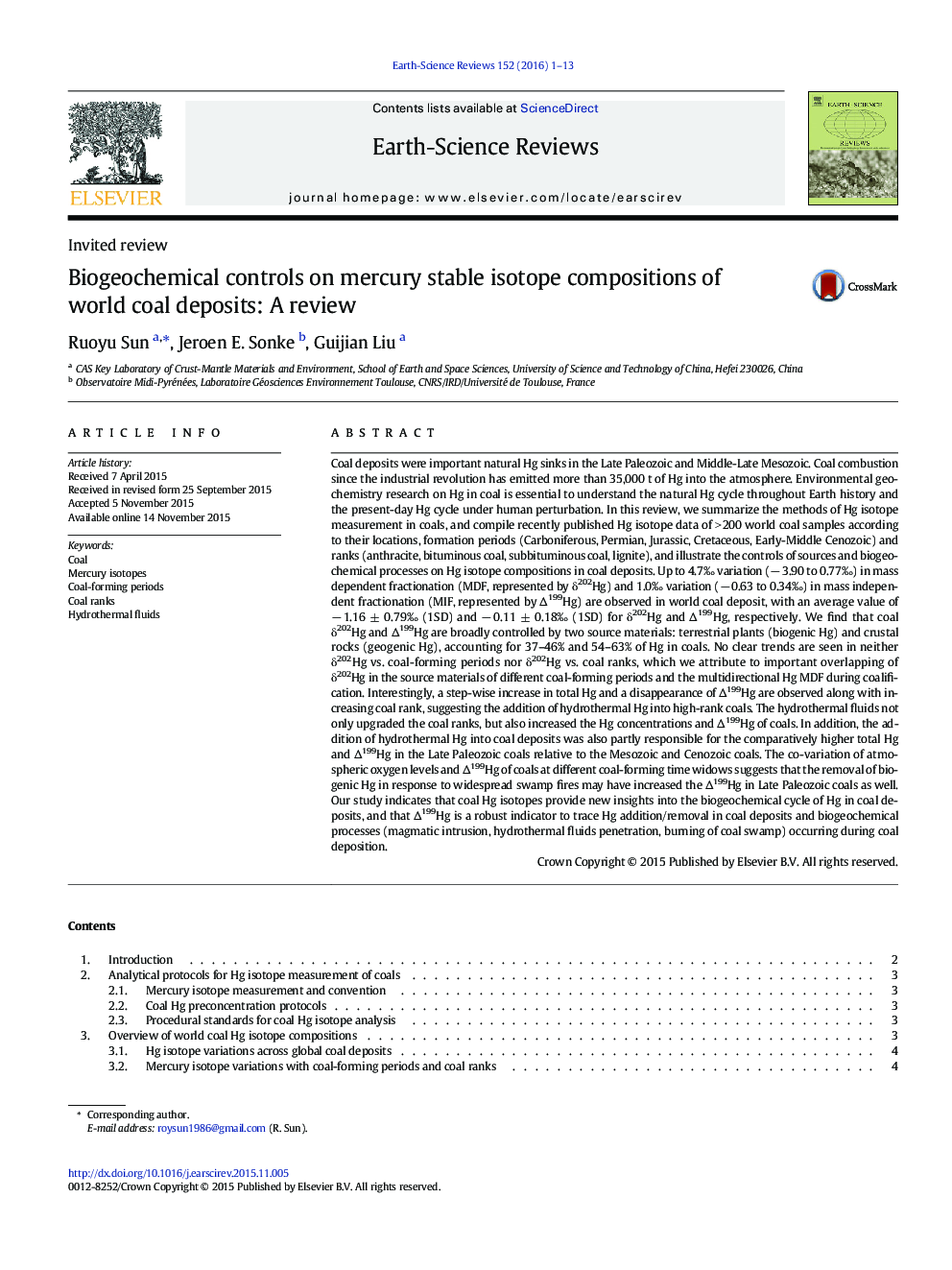| کد مقاله | کد نشریه | سال انتشار | مقاله انگلیسی | نسخه تمام متن |
|---|---|---|---|---|
| 4725628 | 1639950 | 2016 | 13 صفحه PDF | دانلود رایگان |
Coal deposits were important natural Hg sinks in the Late Paleozoic and Middle-Late Mesozoic. Coal combustion since the industrial revolution has emitted more than 35,000 t of Hg into the atmosphere. Environmental geochemistry research on Hg in coal is essential to understand the natural Hg cycle throughout Earth history and the present-day Hg cycle under human perturbation. In this review, we summarize the methods of Hg isotope measurement in coals, and compile recently published Hg isotope data of > 200 world coal samples according to their locations, formation periods (Carboniferous, Permian, Jurassic, Cretaceous, Early-Middle Cenozoic) and ranks (anthracite, bituminous coal, subbituminous coal, lignite), and illustrate the controls of sources and biogeochemical processes on Hg isotope compositions in coal deposits. Up to 4.7‰ variation (− 3.90 to 0.77‰) in mass dependent fractionation (MDF, represented by δ202Hg) and 1.0‰ variation (− 0.63 to 0.34‰) in mass independent fractionation (MIF, represented by Δ199Hg) are observed in world coal deposit, with an average value of − 1.16 ± 0.79‰ (1SD) and − 0.11 ± 0.18‰ (1SD) for δ202Hg and Δ199Hg, respectively. We find that coal δ202Hg and Δ199Hg are broadly controlled by two source materials: terrestrial plants (biogenic Hg) and crustal rocks (geogenic Hg), accounting for 37–46% and 54–63% of Hg in coals. No clear trends are seen in neither δ202Hg vs. coal-forming periods nor δ202Hg vs. coal ranks, which we attribute to important overlapping of δ202Hg in the source materials of different coal-forming periods and the multidirectional Hg MDF during coalification. Interestingly, a step-wise increase in total Hg and a disappearance of Δ199Hg are observed along with increasing coal rank, suggesting the addition of hydrothermal Hg into high-rank coals. The hydrothermal fluids not only upgraded the coal ranks, but also increased the Hg concentrations and Δ199Hg of coals. In addition, the addition of hydrothermal Hg into coal deposits was also partly responsible for the comparatively higher total Hg and Δ199Hg in the Late Paleozoic coals relative to the Mesozoic and Cenozoic coals. The co-variation of atmospheric oxygen levels and Δ199Hg of coals at different coal-forming time widows suggests that the removal of biogenic Hg in response to widespread swamp fires may have increased the Δ199Hg in Late Paleozoic coals as well. Our study indicates that coal Hg isotopes provide new insights into the biogeochemical cycle of Hg in coal deposits, and that Δ199Hg is a robust indicator to trace Hg addition/removal in coal deposits and biogeochemical processes (magmatic intrusion, hydrothermal fluids penetration, burning of coal swamp) occurring during coal deposition.
Journal: Earth-Science Reviews - Volume 152, January 2016, Pages 1–13
